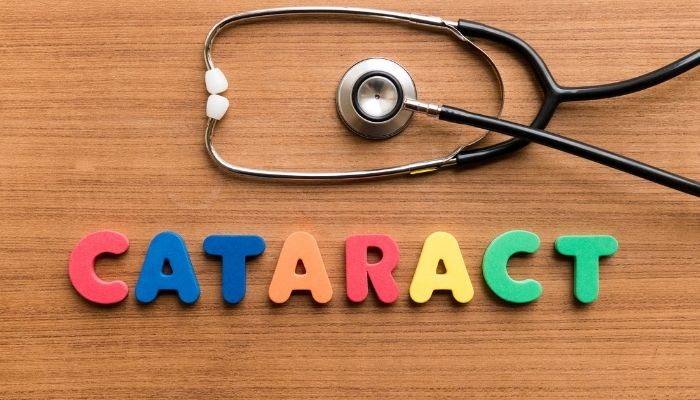Mahesh was a middle-aged man suffering from type-2 diabetes for over a decade. Diabetes came to him as a hereditary disease from his forefathers. Over the past few weeks, Mahesh was experiencing difficulty driving at night time and often complained of a headache when trying to read a newspaper sitting in the sunshine. He got his eyesight checked and the Ophthalmologist doubted that these were all cataract symptoms after an eye examination, he confirmed that Mahesh was suffering from a cataract.
A cataract is a disorder of the eyes when there is a formation of a cloudy and dense area right in the lens of the eye. Cataract may not affect both your eyes together, it may take place in one eye only. Cataract forms due to the accumulation of protein in the eye in the form of clumps that ultimately prevents a clear vision.
Let us dig deeper to understand how to get rid of this disorder by detecting early cataracts.
Early Signs of Cataracts
Catching any disease at its early stage makes it easier to treat it. So, we suggest you be aware of the early signs of cataracts. No matter, which type of cataract it is, some of the early symptoms of cataract are:1. Problematic Night Vision
The number one early sign of cataract is when one encounters difficulty seeing things clearly during the night time. In other words, when a person feels it extremely difficult to see at night due to a darker vision, then it is most likely to be due to a cataract.2. Fuzzy or Cloudy Vision
Second common early sign that can help you detect that you are suffering from a cataract is when you experience a cloudy vision. You either see small fuzzy spots or small aberrations in your field of vision. Moreover, these spots tend to worsen with time, so make sure to consult an eye specialist if you experience cloudy vision.3. Halos or Glare Appearance in the Vision
Cataract hardens the eye lens and as a result the vision becomes cloudy. Due to this, chances are that a person notices halos or glares in the vision. There is a kind of formation of ringlets around when one tries to see the bright lights.4. Increase in Light Sensitivity
Last of those early symptoms of cataract one can detect with ease is when there is enhanced light sensitivity. When one is unable to see directly at the bright lights. Moreover, watching at bright lights leads to headaches, then you are most likely to suffer from cataracts.Signs of Cataracts
If you are unable to detect a cataract in its early stage, how will you know whether or not you are suffering from cataracts? For this, you need to have a complete awareness of other common cataract symptoms like:1. Double Vision
One of the most common signs of cataracts is when you tend to see double images of one thing. In other words, if you are experiencing double vision all of a sudden, which is getting worse day by day, then it is due to a cataract.2. Difficulty to Identify Colors
At the same time, when differentiating between colors becomes a troublesome task, you may consider yourself stuck with a cataract eye disorder.3. Sudden Near-sightedness
On the other hand, if you suddenly feel a change in your spectacles number, especially a sudden increase in your near-sightedness number, then you need to be alert. It is a cataract symptom that you may not be aware of!4. Difficulty to Read in Normal Light
When you find it hard to read and study in normal light and want brighter light, then it is a clear sign of a cataract. This is because cataract has started hampering your vision by darkening it.Causes of Cataract
It is obvious for anyone who detects the early signs of cataract to be curious to know about the cause. There are plenty of risk factors that may lead to this eye disorder called a cataract. Some of these causes are listed below:- Diabetes
- Hypertension
- Smoking
- Obesity
- High Myopia
- An Old Eye Injury
- An Old Eye Surgery
- Family History of Cataract
- UV Rays from the sunlight
- Hormone Replacement Therapy
- Use of Statin Medicines to Control Cholesterol
- Extensive Use of Corticosteroid Medicines
Cataract Treatment
Let us now understand what kind of treatments are available to get rid of cataracts and is a cataract curable? There are mainly two things a cataract patient can do if suffering from a cataract. One is a temporary solution and not a treatment, while the other is the only treatment to get rid of cataracts. Have a look:1. Prescription Glasses
To get relief from obstructed vision impacted by cataracts, one may try using prescription glasses. But this is a temporary treatment and won’t rectify your vision.2. Cataract Surgery
The only effective treatment for a cataract is the surgical removal of the clump formed on the retina. There are two types of cataract surgeries:3. Phacoemulsification
This is the most commonly opted cataract surgery done using ultraviolet waves. In this surgery, the clump from the lens is removed by breaking apart the lens.4. Extracapsular Surgery
In this type of surgery, the cloudy part is removed through an incision in the cornea. Once that clump is removed, an artificial intraocular lens is then placed in the place of the natural lens.The Bottom Line
One may prevent cataracts by avoiding direct exposure of eyes to the sun’s UV rays. If you have a history of cataracts in your family, make sure to get your eyes examined regularly. Besides, pay attention to maintaining a healthy lifestyle, and keep your diabetes, hypertension, and other medical issues under control. If you detect early signs of cataracts, make sure not to delay consulting an Ophthalmologist to confirm whether it is a cataract or not. Go for timely treatment and prevent yourself from getting hampered with a damaged vision due to a cataract.



